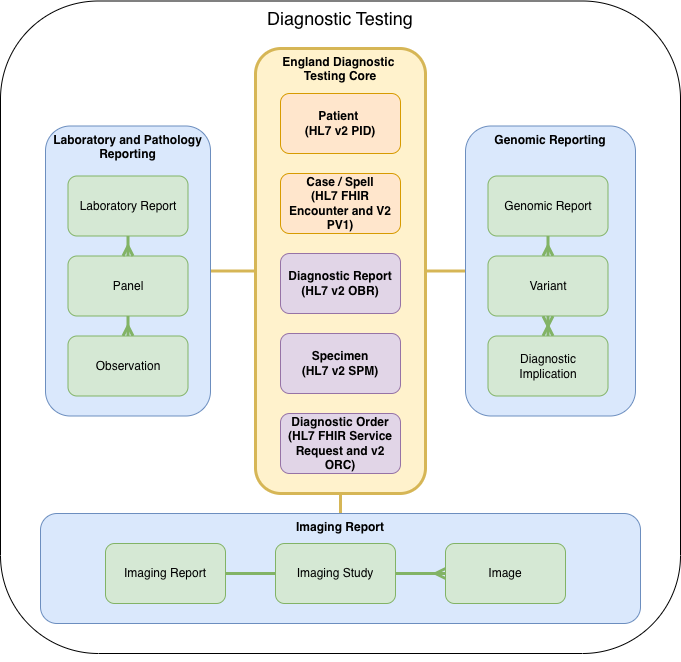NHS North West Genomics
0.0.8 - ci-build
NHS North West Genomics
0.0.8 - ci-build
NHS North West Genomics, published by NHS North West Genomics. This guide is not an authorized publication; it is the continuous build for version 0.0.8 built by the FHIR (HL7® FHIR® Standard) CI Build. This version is based on the current content of https://github.com/nw-gmsa/nw-gmsa.github.com/ and changes regularly. See the Directory of published versions
The data model is divided into four main contexts (bounded areas):

Diagnostic Testing Bounded Contexts
This is the core shared context that links the other three domains; the data modeling is based on Domain Entities or resources. It includes common HL7 v2 and FHIR elements used across diagnostic workflows:
These core components enable interoperability and data exchange among different reporting domains.
Note: Patient and Case/Spell are logically part of a Patient Administration domain.
Archtypes High Level Model
This domain focuses on genomic and molecular diagnostics, the data modeling here is Archetypes or templates.